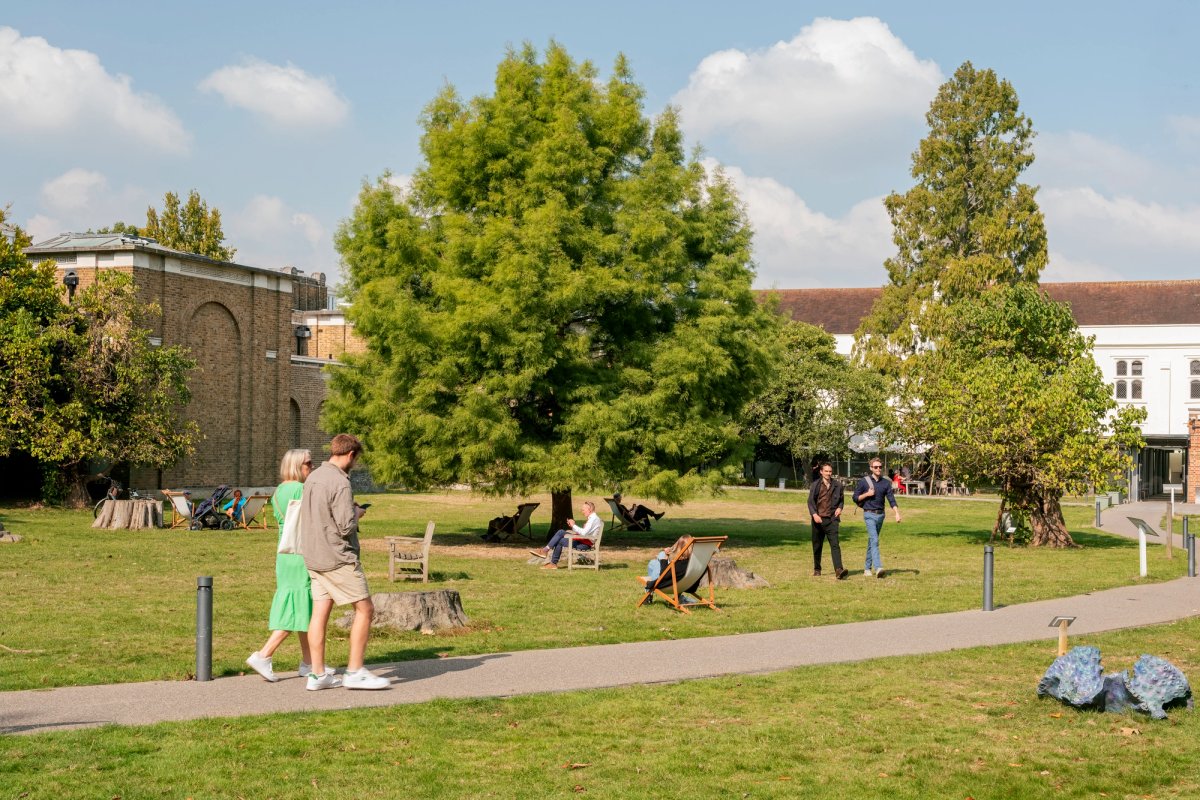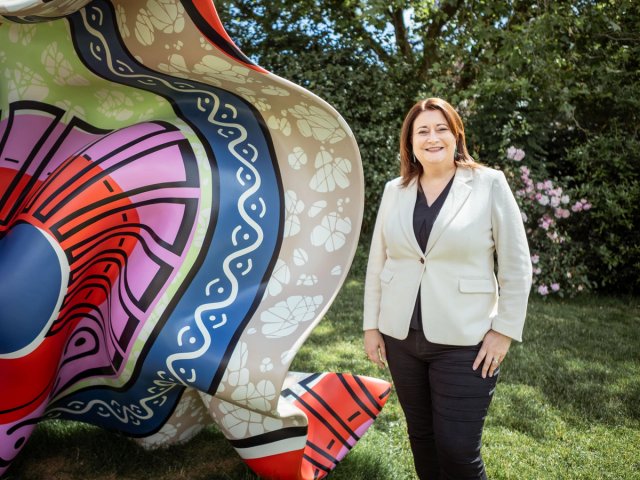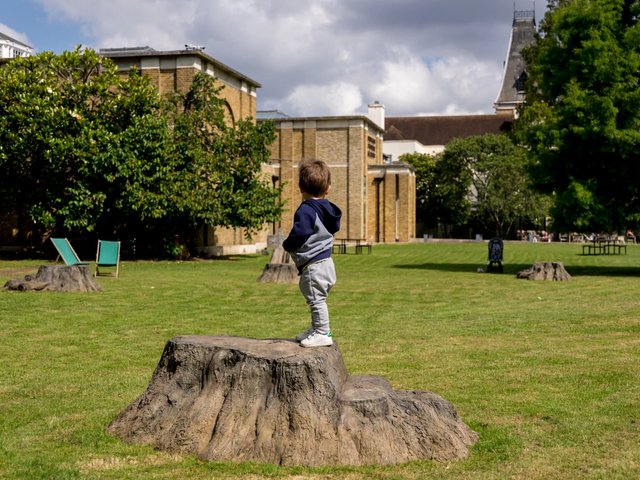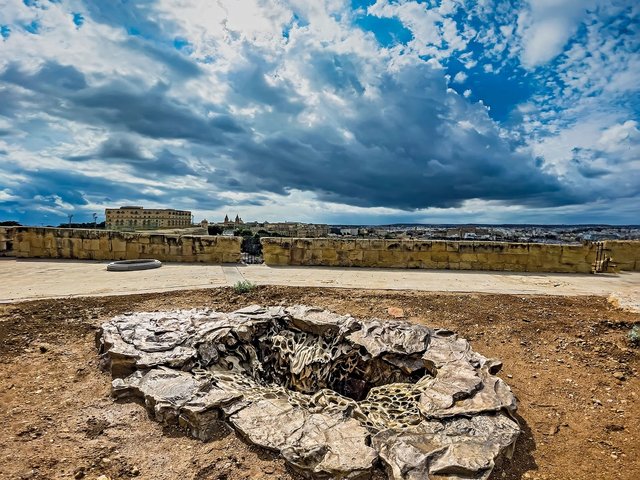Dulwich Picture Gallery in south London will open its newly transformed sculpture garden to the public next month (6-7 September). The space will be the centrepiece of the gallery’s most significant redevelopment in a generation, the £5m Open Art project, which builds on its heritage as England's first purpose-built public art gallery.
Previously underused green space has been reclaimed for the sculpture garden, which will host an ever-changing programme of contemporary art on staggered two-year loans, alongside permanent additions including a land art work by Kim Wilkie. An ArtPlay Pavilion, designed by HoLD Collective and architects Carmody Groarke will provide art-inspired sensory play for young children, with The Canteen nearby providing facilities for schools and families. The gallery will also open a new entrance, following the restoration of elements of John Soane’s 1811 plans for the building.
“Our overarching mission is to unlock art for everyone,” says the gallery’s director Jennifer Scott, explaining how the Covid-19 pandemic underscored the need to make better use of the organisation’s three acre grounds. “It wasn't just that people wanted our gardens, they needed them. They were coming here for their health and their mental well-being, and that added this extra drive to our vision to have publicly accessible sculpture in our gardens.”
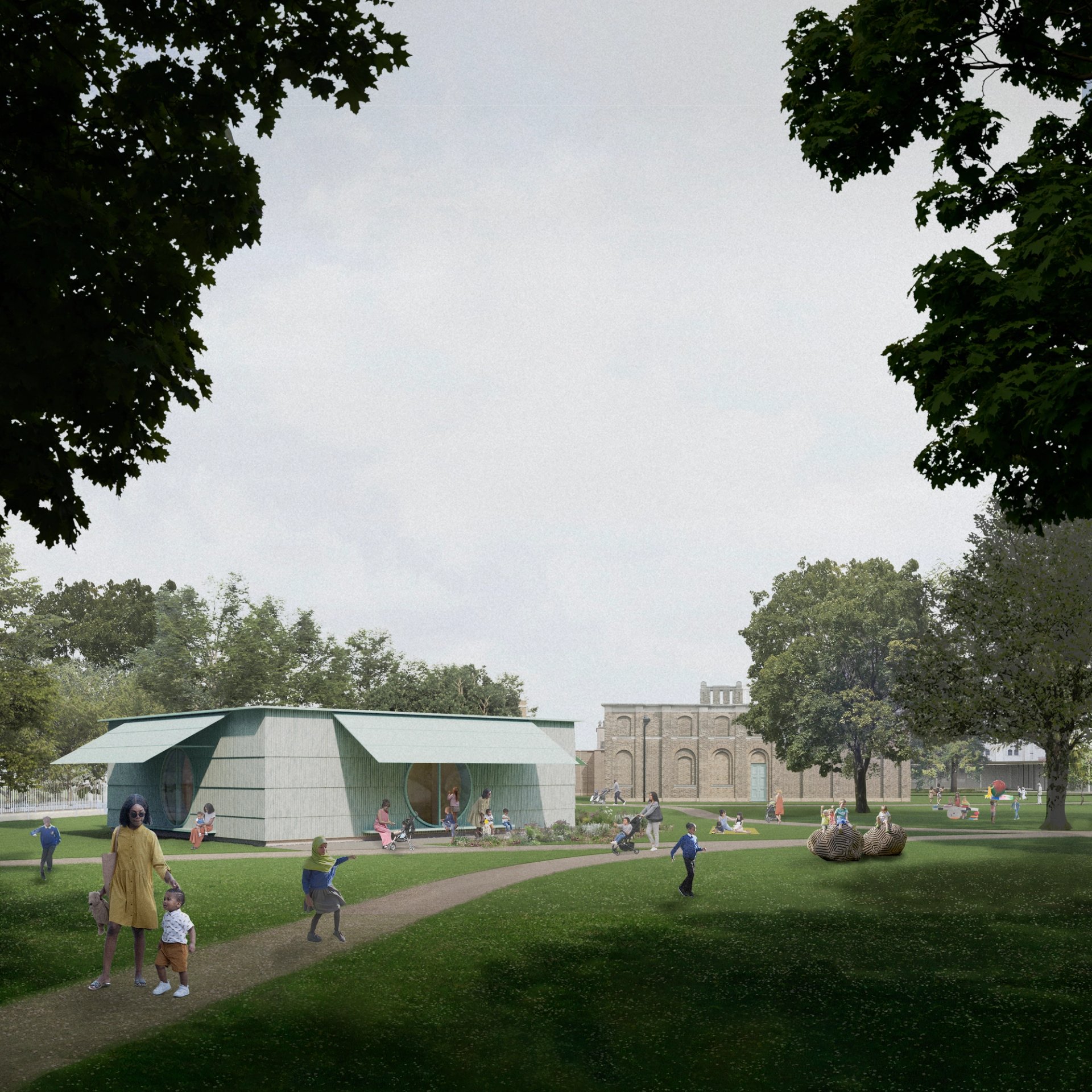
Carmody Groake, ArtPlay Pavilion view
Courtesy Carmody Groake.
In order to fund these changes, the gallery, which receives no regular government funding, had to more than double its annual fundraising burden of £4m. Alongside an ongoing public campaign, and support from friends and patrons, the project’s principal donor is The Lovington Foundation, which has funded the an area of the garden dubbed the sculpture meadow. Other major donors include The Julia Rausing Trust, which supports the ArtPlay Pavilion.
Appealing to the specific interests of funders, such as the Manton Foundation which has supported an energy-saving ground source heat pump, helped to unlock support and build a sense of partnership, says Scott. Unofficial but important relationships have also been established with the Tree Council, with Fatoş Üstek, the director of Frieze Sculpture, and with sculpture parks around the country and beyond.
Catering to its diverse audiences has also been key, Scott explains. Despite its affluent location within the London borough of Southwark, the gallery is close to areas experiencing significant deprivation. In addition to links with 150 local schools, the gallery works across the neighbouring boroughs of Lambeth and Lewisham, and maintains a partnership with a local NHS GP surgery.
Further opportunities to test and engage audiences were created via the temporary pavilions set up in the gallery’s grounds in the summers of 2017 and 2019. Similarly, prior to its purchase in 2024, Rob and Nicky Carter’s circular Bronze Oak Grove was installed for a three-year trial period—it will now become the new sculpture garden’s “hero piece”.
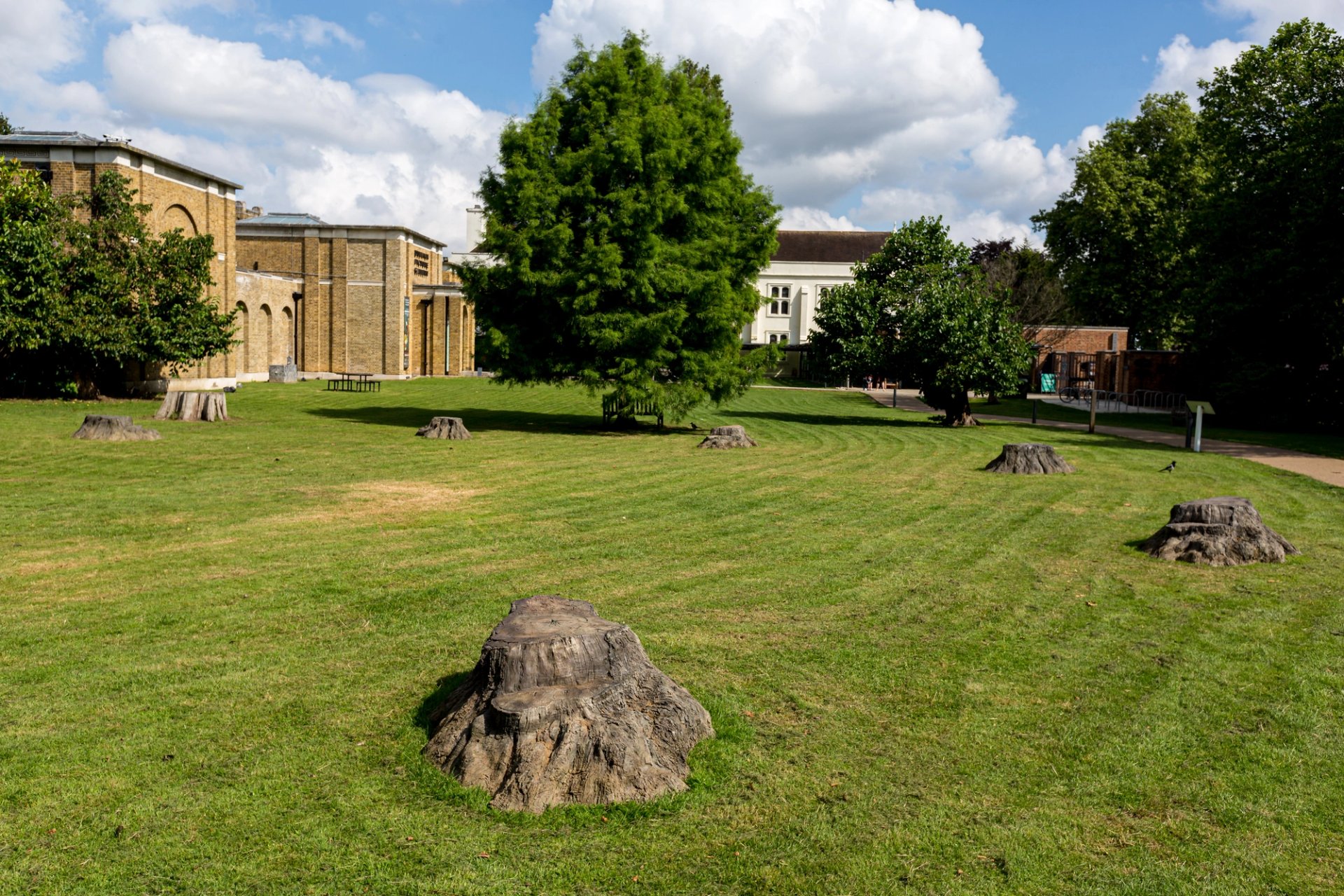
The gallery is aiming for all the garden's works to have an interactive element
Rob and Nick Carter, Bronze Oak Grove, 2021
“We wanted to see how audiences responded to an artwork they could sit on and play with”, says Scott. “We've had marriages in the middle of that circle, and performances of plays.”
This interactive element is essential for works coming into the garden, even for those that have to remain behind barriers. “The aim is that it'll always feel really fresh, it will feel like a destination,” says Scott, acknowledging the gallery’s longstanding difficulty of coaxing visitors to make the 12-minute train journey from London Victoria. “Having more to do once you get here helps our audiences know it’s worth the trip.”
Though the contemporary focus echoes recent programming, specifically the current Rachel Jones exhibition, Scott says there will be no wider shift towards contemporary programming. “Our paintings were contemporary when they were made,” she says, “so how we unlock their relevance today is to speak to that excitement and innovation—sometimes we do that through contemporary artists.”


